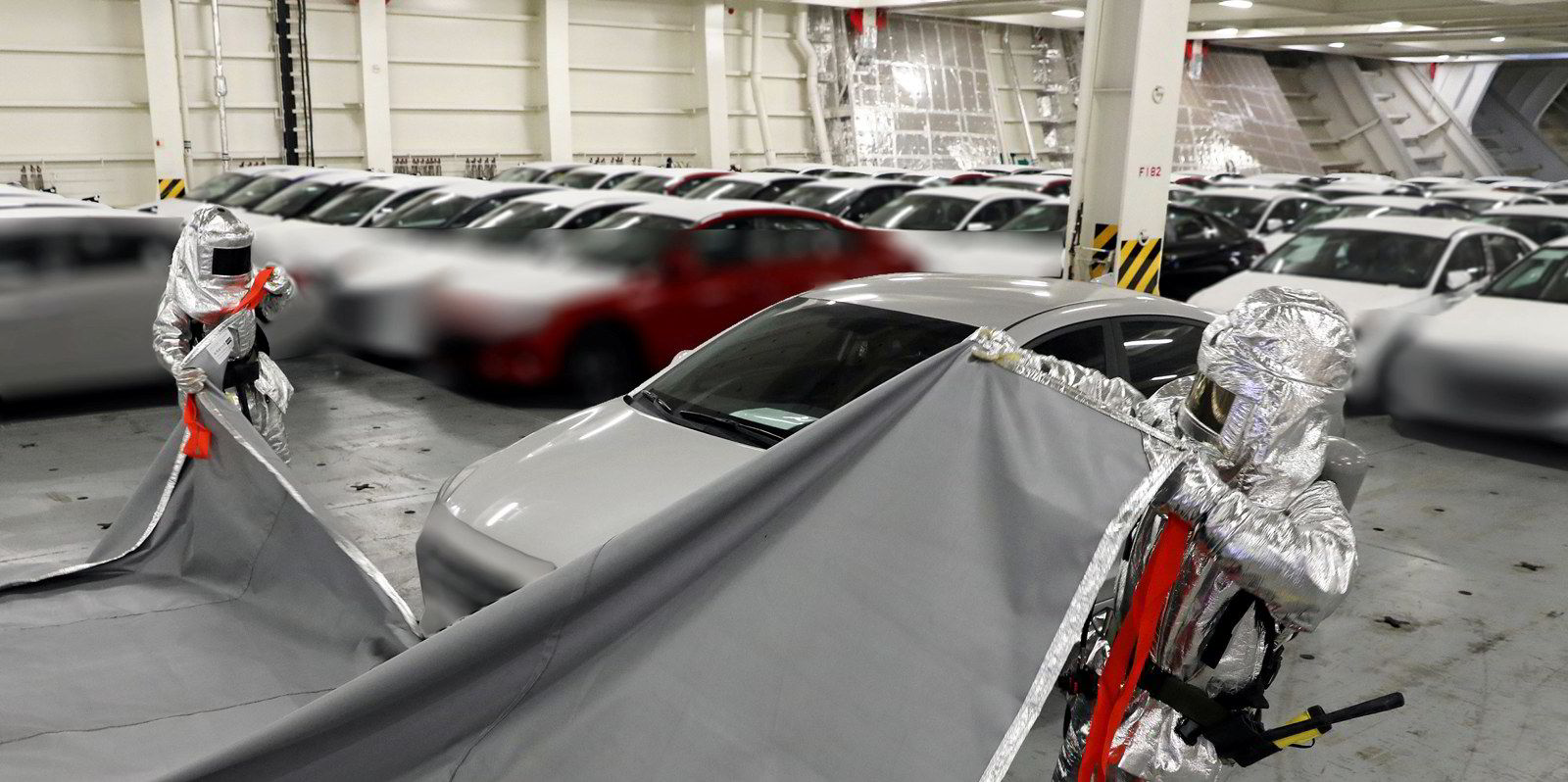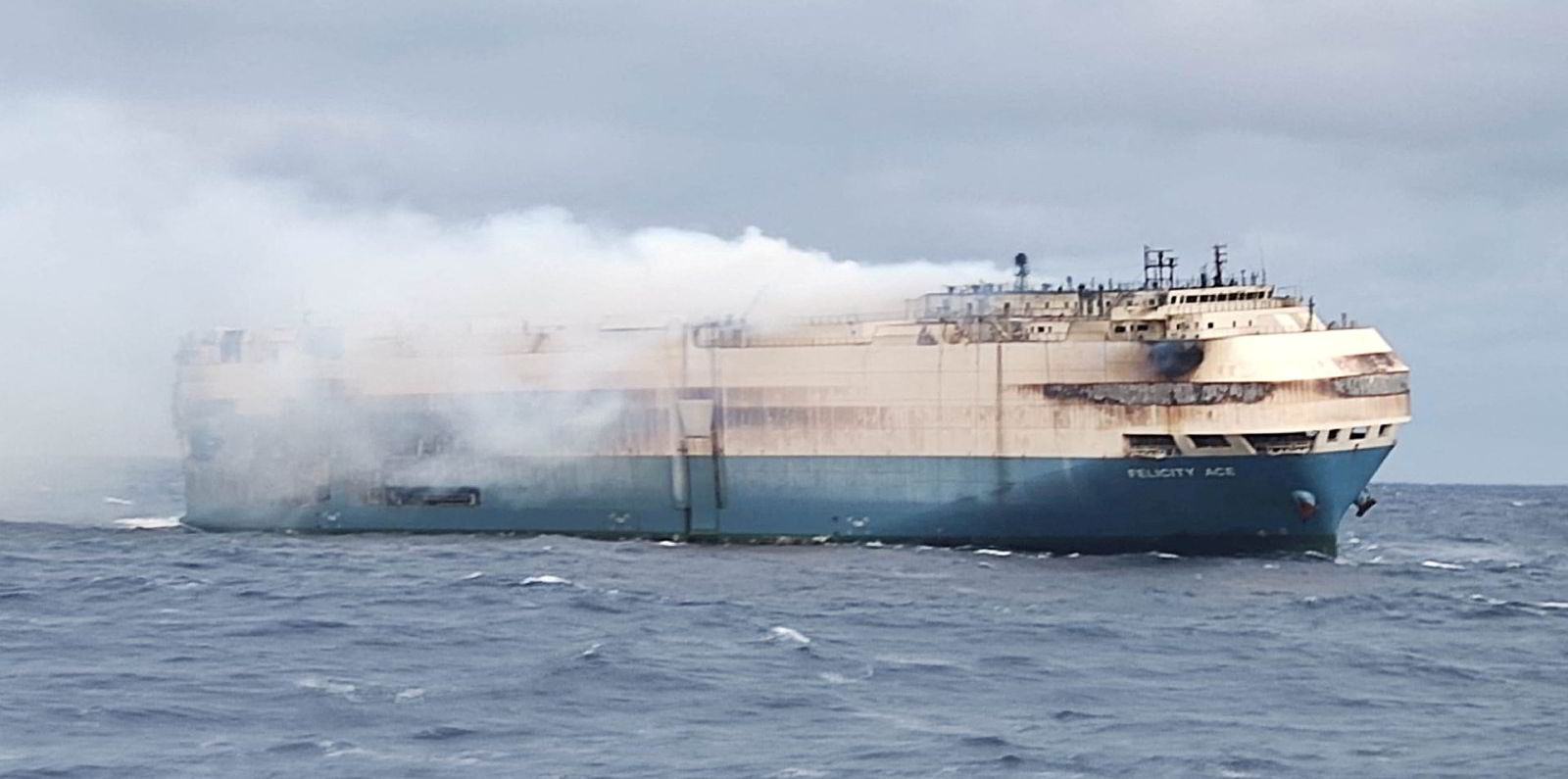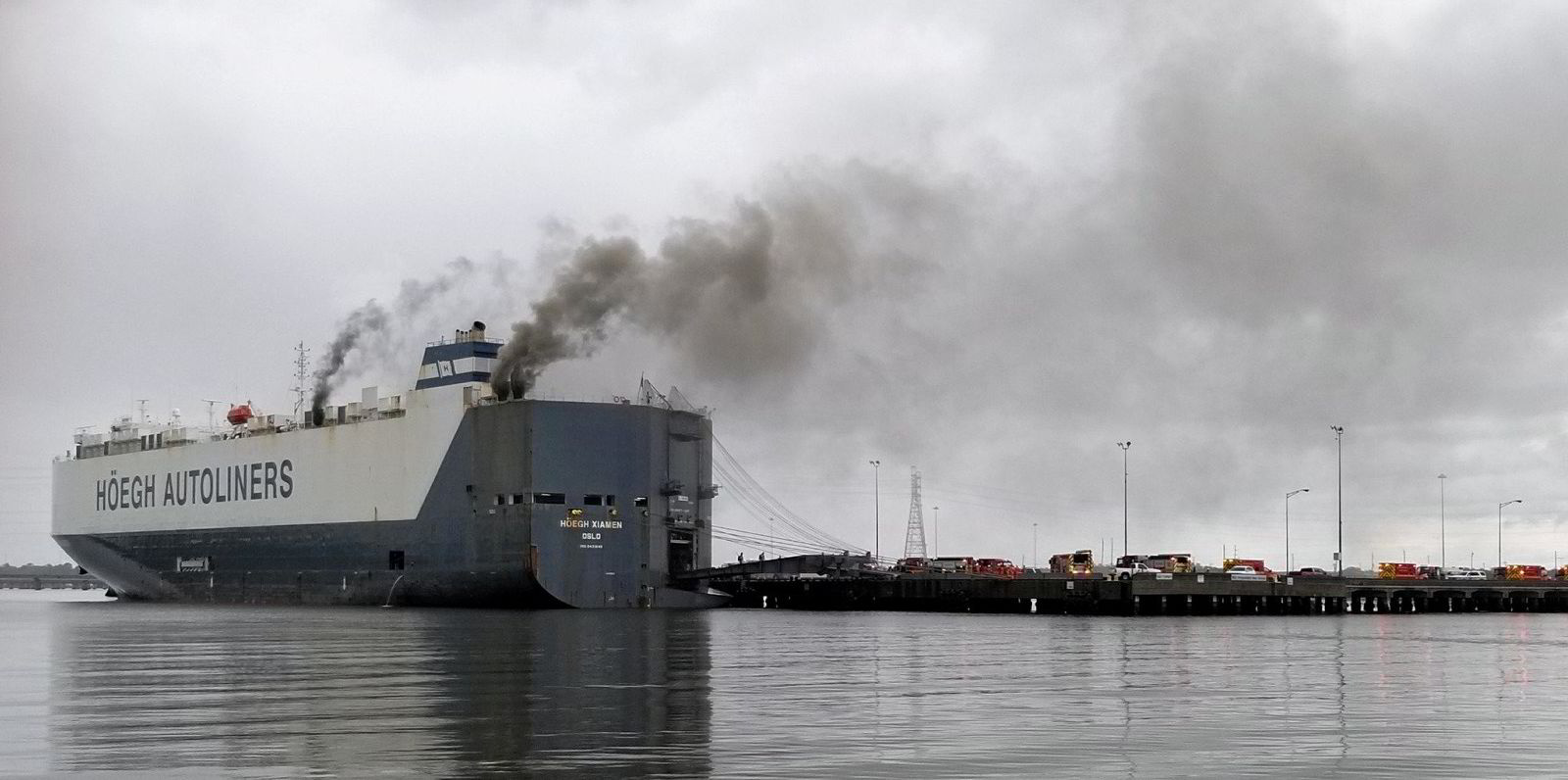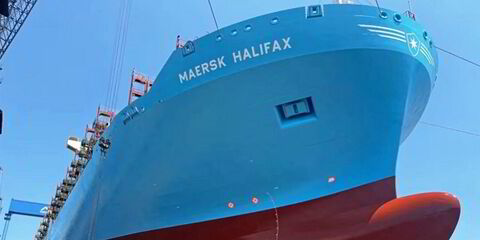Carrier owners are flush with cash and they need to spend more of it on preventing electrical vehicle fires, according to two top maritime insurers who are also former car carrier executives.
Car carrier and ferry owners should also be spending more on training and equipment — despite the absence of clear safety requirements — and their ships should be taking more time at terminals to follow best loading practices.
At a recent Oslo conference, the insurers cited myths about how lithium-ion battery fires start, explained how the cars burn and outlined the risks from electric vehicles as opposed to conventional and hybrid.
“The good news is that there are no documented cases of factory-new electric vehicles burning on board,” said Captain Matti Simojoki of marine insurer Alandia, addressing the Marine Insurance Nordics conference.
Geir Jorgensen, Skuld’s global head of loss prevention, agreed with him that pure electric vehicles are “inherently better built” than their conventional and hybrid peers from a safety point of view and that firefighting methods are improving.
The F500 fire extinguishing agent is making it easier to fight electric vehicle fires by encapsulating the objects to be extinguished. Before long, battery manufacturers may even develop self-extinguishing batteries.
In the meantime, they said, owners need to be investing money and time.
“This may not be welcome to shipowners because everything comes with a cost, but car carrier crews need more training,” said Jorgensen, a former head of health, safety, security, environment and quality with Hoegh Autoliners before joining Skuld.
There is no special required training in firefighting for car carrier crew members, and no special fire-prevention equipment is required under the International Convention for the Safety of Life at Sea (Solas) regulations.
“Shipowners need to go beyond that,” he said.
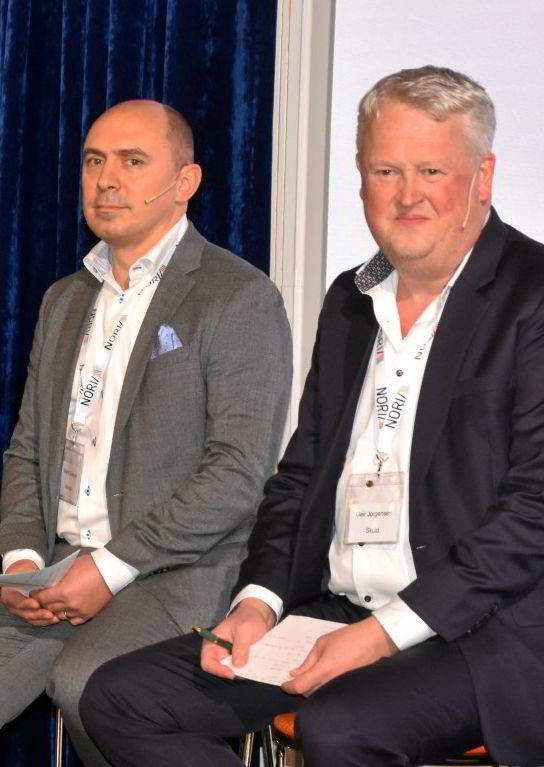
Simojoki agreed and added that shipowners should be willing to devote more time to best practices in loading vehicles — something that will eat into voyage earnings.
“Traditionally, loading is done in the logistically best way, not the safest way,” said Simojoki, a former master for car carrier major Wallenius Lines before joining Alandia, where he is now senior loss prevention manager. But for fire safety’s sake, similar cars should be grouped in loading zones.
“It is less time-efficient but it is safer,” he said.
One reason for zoning is that conventional car fires can be extinguished by sealing a space on board and filling it with carbon dioxide, and electric vehicle fires cannot. Lithium-ion batteries produce their own oxygen for combustion, and in most cases have to be covered and allowed to burn out.
In a panel discussion with Danielle Norum Phillips of adjustor and marine surveyor Wesmans, Jorgensen and Simojoki addressed the widespread belief that fires in battery-driven vehicles are more intense and harder to extinguish than in conventional vehicles.
Simojoki called this a myth.
“The heat release rate in electric car fires is actually less than conventional cars,” he said. Research shows that the peak temperature of fires in gasoline and diesel-burning cars is higher and it takes a shorter time to reach it, while electric vehicle fires are steadier.
In either case, what drives a vehicle fire and generates most of the toxic fumes is the plastic content in the vehicle.
“It’s the plastics that are your enemy, not the battery,” said Simojoki.
Another widespread view, that vehicle fires on vessels are more likely to start during charging, falls into the unconfirmed category.
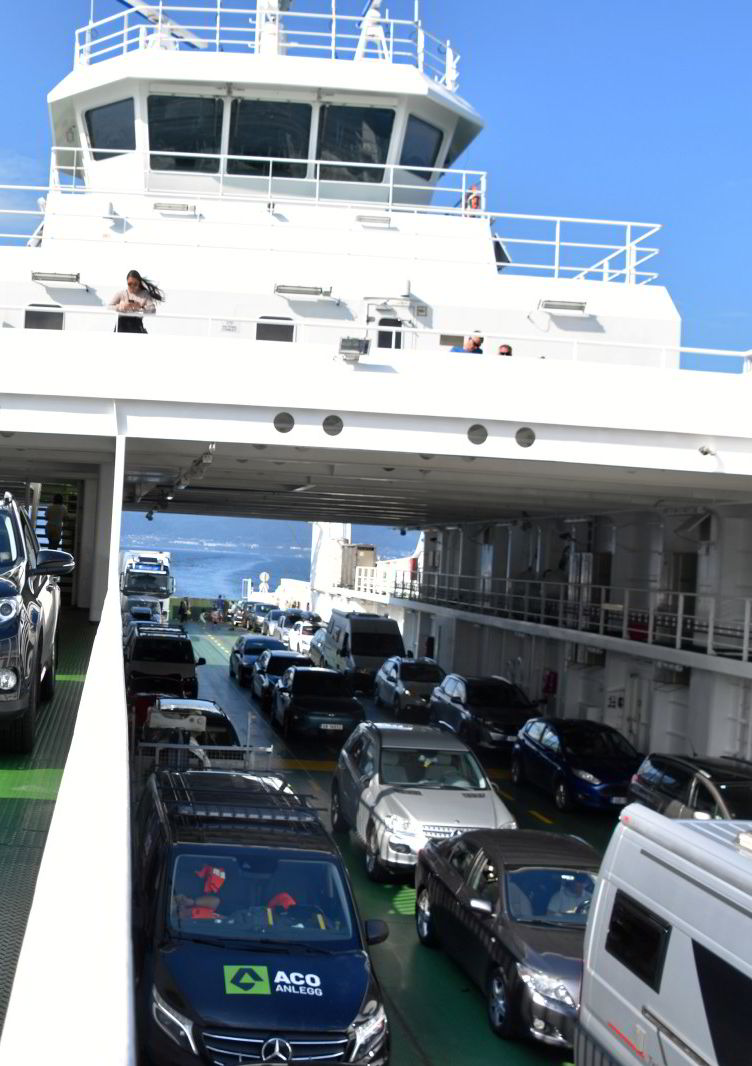
An Australian study showed that about one-third of fires started during charging.
But here again, there has been progress in the form of safer products and safer best practice, including shipping cars with their batteries only about 30% charged.
“And the new types of electric vehicles have a quite sophisticated battery charging system, in which the risk of overheating is reduced,” said Jorgensen.
“Pure electric vehicles offer lower risk. Hybrid cars are a risk we haven’t yet fully understood or come up with good mitigation for.”
Car carrier owners with relatively homogeneous cargoes can address some of the issues more easily than owners of ferries, who have relatively little insight into what travellers are driving on board or bringing with them, said Skuld’s Jorgensen.
“My strongest advice to operators is to invest in crew training, not only on big car carriers but also on small coastal ferries,” he said.
